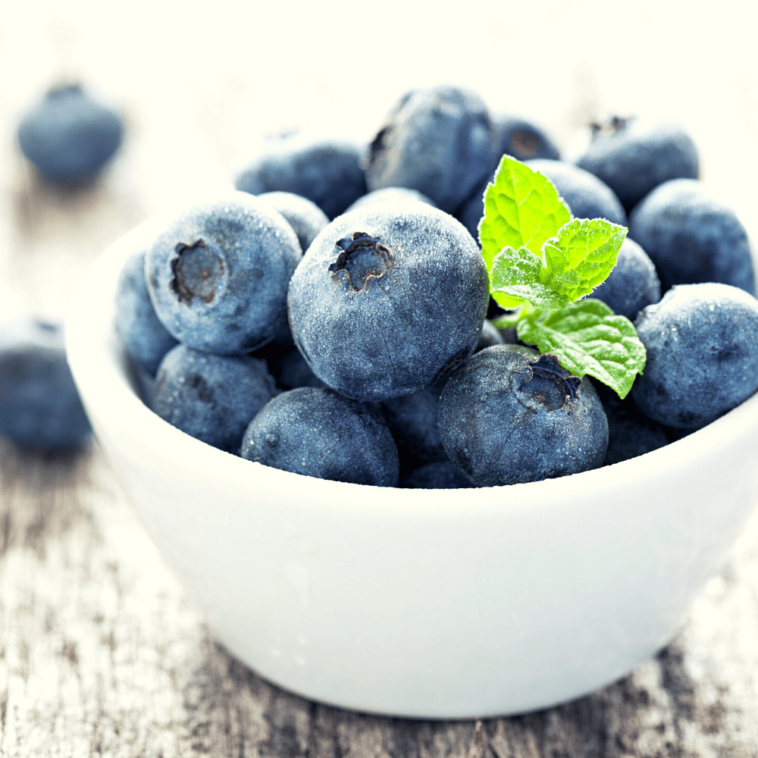Are you looking to add some color to your plate?
Look no further because I’ve compiled a list of over 30 blue food items that will not only add some vibrancy to your meals, but also provide some unique and interesting flavors.
From blueberries to blue spirulina to blue corn to blue mushrooms, this list has it all!
All of these blue food items are naturally true blue, so you can feel good about indulging in these colorful treats.
Blue Food Items
If you’re looking for ways to improve your diet, adding some blue foods items to the menu is a great place to start!
Let’s dive in and explore the world of naturally blue foods!
Related: Blue Fruits and Vegetables and 21 Blue Snacks: Tasty Snack Ideas
1. Blueberry
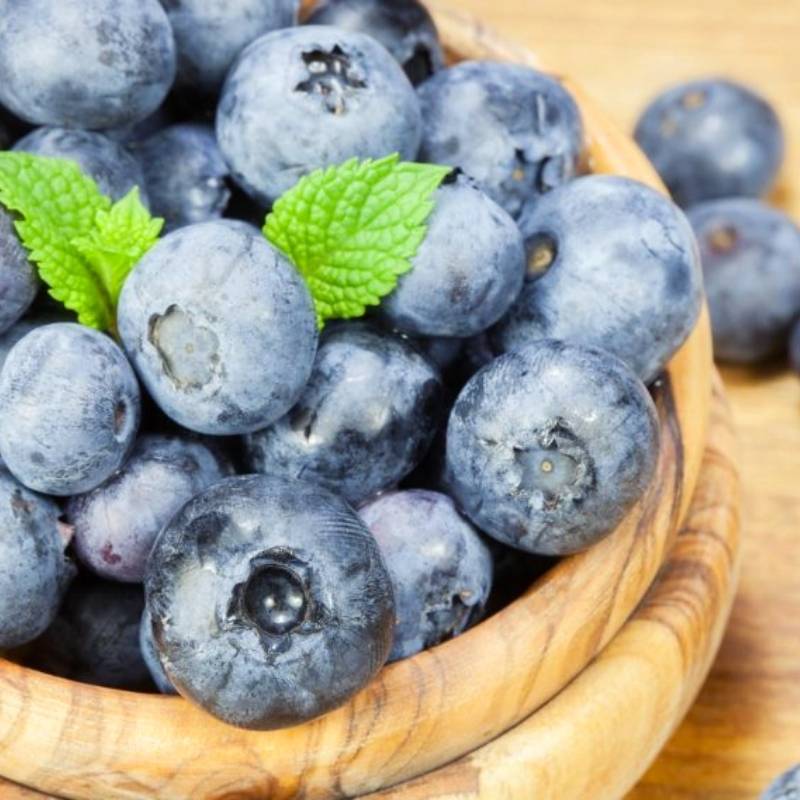
Of the many naturally blue foods on the planet, none are more well-known than blueberries.
They are rich in antioxidants and have been shown to improve brain health. Blueberries are also a good source of fiber, which can help regulate digestion.
Anthocyanins give fruits a blue hue. These compounds also give blueberries their super healthy antioxidant properties.
Blueberries are also high in vitamin c, manganese, and copper. Blueberries are considered a super food.
Related: Top 10 Blue Vodka Cocktails
2. Blue Spirulina
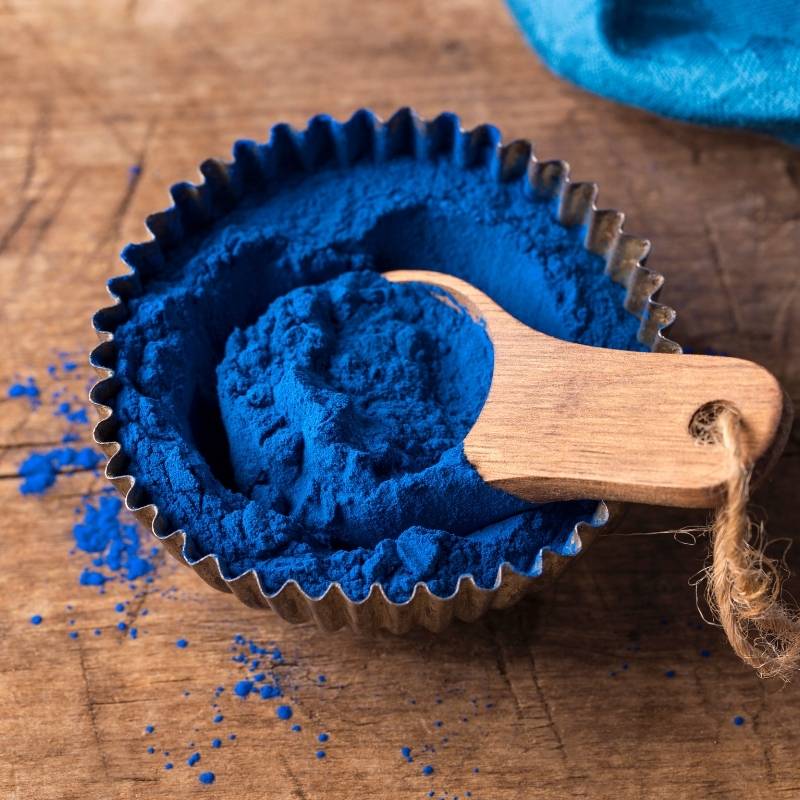
Blue spirulina may be one of the most nutrient-dense foods on the planet.
Phycocyanin is a plant pigment that gives spirulina its blue-green color and is rich in antioxidants and anti-inflammatory properties. anti-inflammatory properties.
Blue spirulina is also high in protein and iron and also contains vitamins A, B, and E.
Blue Spirulina can be found in powder form or tablet form at most health food stores.
3. Blue Sausage Fruit
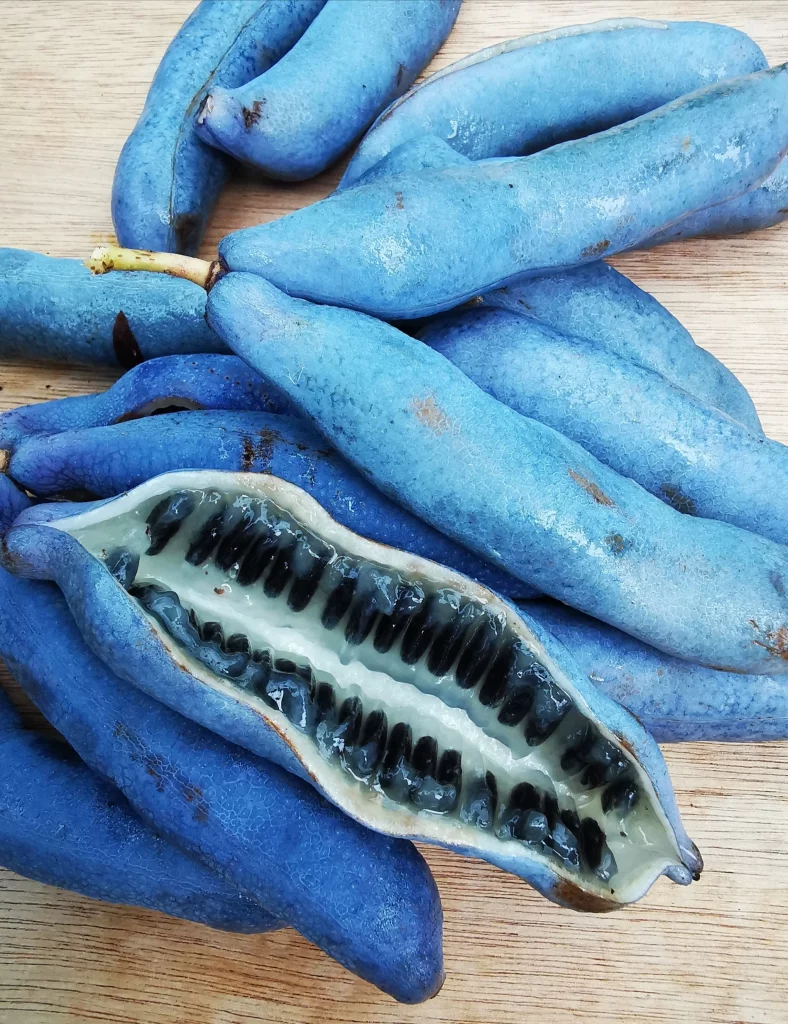
Blue sausage fruit’s transparent pulpy flesh tastes deliciously sweet and subtle, with hints of melon and cucumber. However, the fruit’s unique selling point is its incredible blue peel, which is not edible.
Approximately the size of a hot dog, blue sausage fruits can be found in the wild. However, the blue skin and large seeds are toxic and should not be eaten.
4. Blue Corn
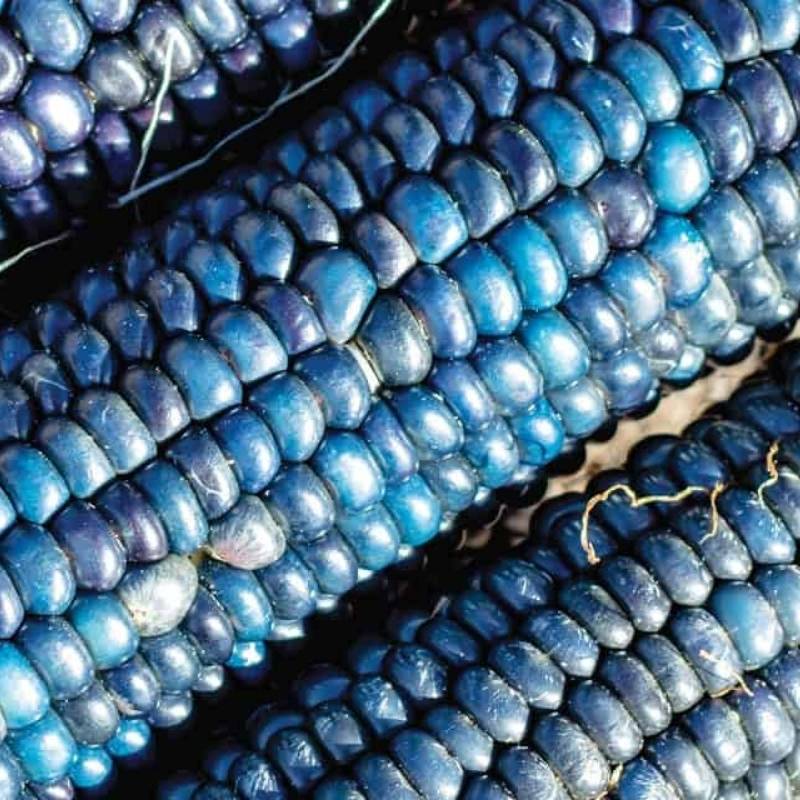
Originally developed by the Hopi, blue corn is a staple of Mexican and American Southwest cuisine and is a totally natural blue food.
It’s used to make blue tortillas and corn chips, and as a bonus, it has 20 percent more protein than white corn!
Blue corn kernels get their color from anthocyanins, which have been shown to have anti-cancer properties.
You can find blue corn at most health food stores or online. If you can’t find it, you can substitute white or yellow corn.
5. Blue Pea Flower Tea
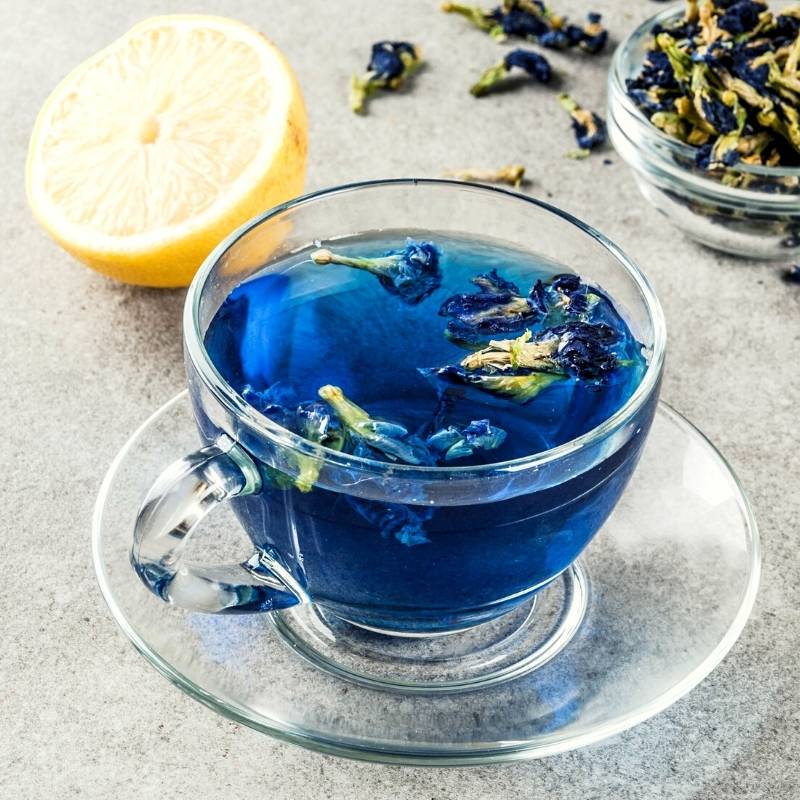
Butterfly pea flower tea, commonly known as Blue Tea, is a caffeine-free herbal tea.
Its taste is similar to chamomile, with a floral, and mildly sweet flavor.
Butterfly-pea flower tea is known for its earthy taste and for enhancing your mood. Stress-busting properties of the tea may help reduce anxiety symptoms.
Several other health benefits can be attributed to it, including increased weight loss, better blood sugar control, and better hair and skin health.
The blue pea flower is also used to color white rice blue.
6. Blue American Lobster
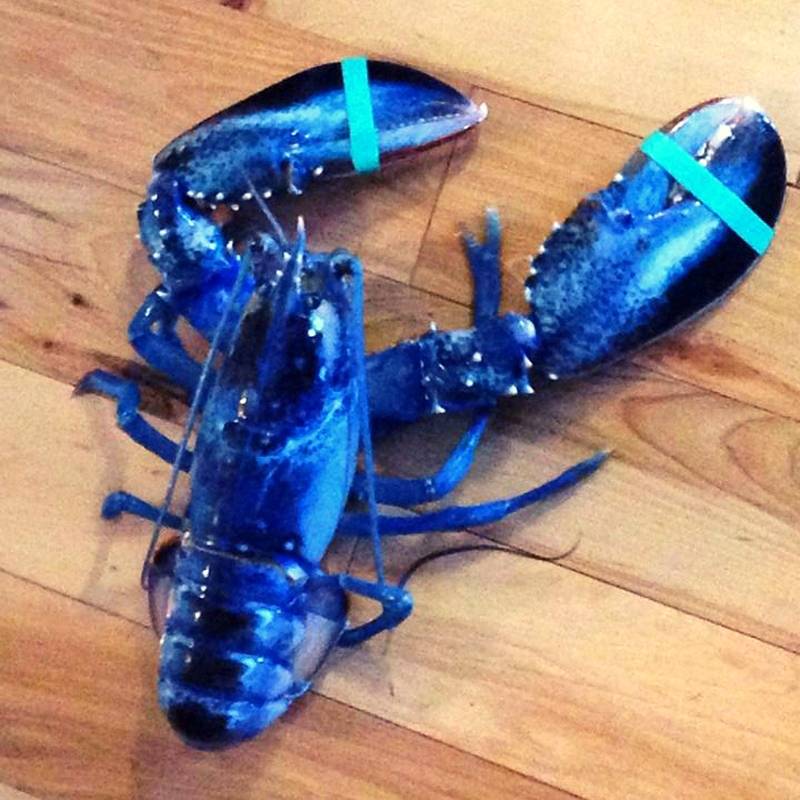
The American blue lobster is a variety of lobster that is native to the Atlantic Ocean. The striking blue lobster is just a variation of a regular American lobster.
The blue color is due to a genetic mutation. Blue lobsters are very rare and are considered a delicacy.
If you are lucky enough to find one, you can cook it the same way as you would any other lobster.
7. Elderberries
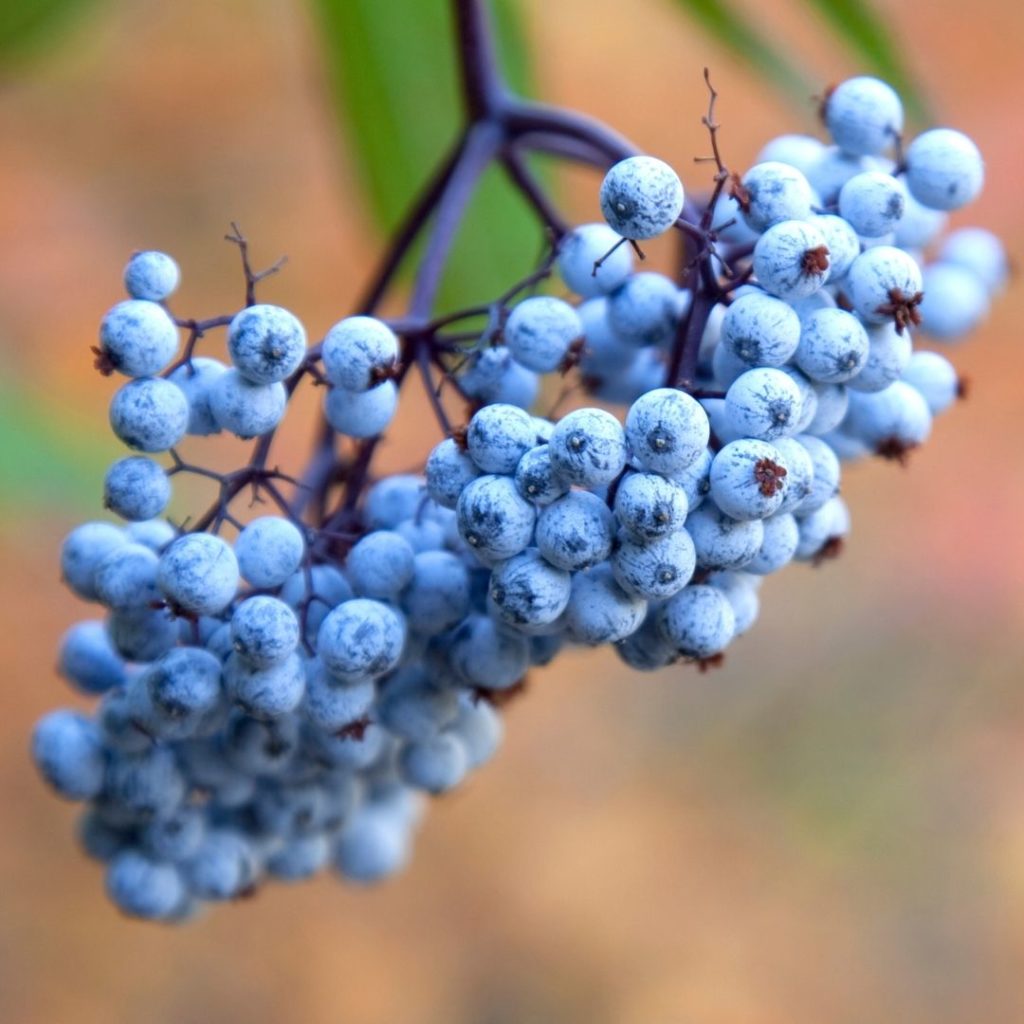
This blue-purple fruit may help defend against the cold and flu by boosting your immune system.
It’s also been shown to help people recover from these illnesses faster.
Elderberries have a mildly bitter flavor. You can use them to make wines, juices, jams, and jellies.
You shouldn’t pick elderberries until they are fully ripe; this is because some elderberries are toxic until they are ripe.
8. Blue Chocolate Tomatoes
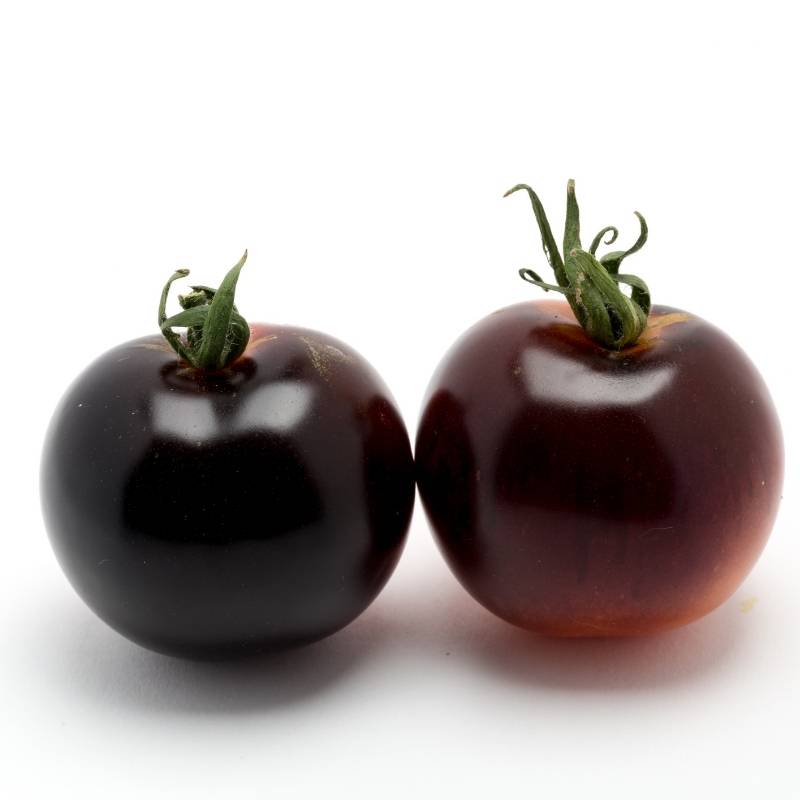
The Chocolate Blue tomato is renowned for its thick and meaty texture. They are shaped overall round and weighing four to six ounces on average.
They get their blue color from anthocyanins. Anthocyanins are a type of flavonoid, which are plant pigments that have health-promoting effects.
Other varieties of blue tomatoes include Blue Bayou, Blue Beauty, and Blue Gold.
Blue tomatoes have the same nutritional value as red tomatoes. They are a good source of vitamin C and lycopene.
9. Blue Caviar
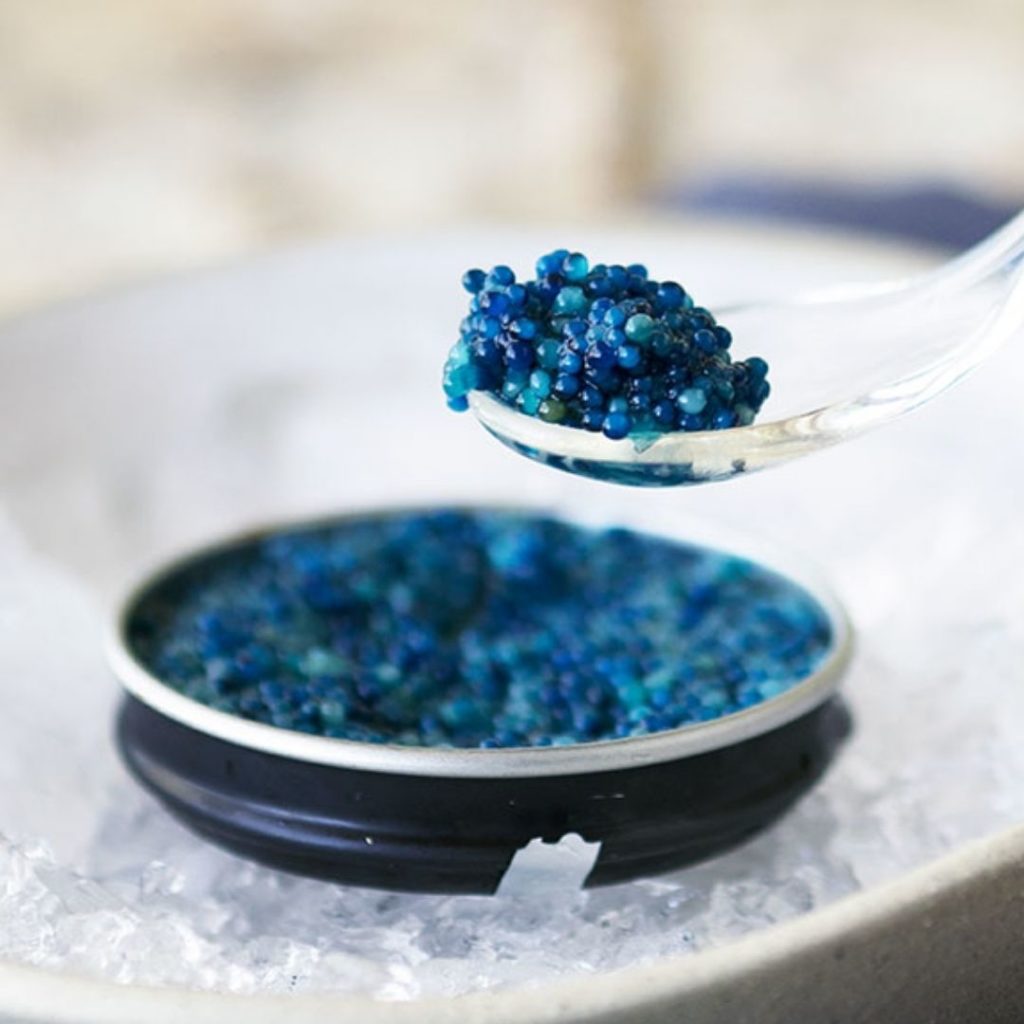
Naturally blue caviar is also known as the “sapphire of the ocean”. It is actually a type of wild scampi roe which is harvested off the coast of Australia.
The scampi’s blue roe season takes place between November and March. Blue roe is rich in omega-3 fatty acids and protein. The flavor has been described as briny, umami, and the taste of the ocean.
10. Blue Lincod Fish
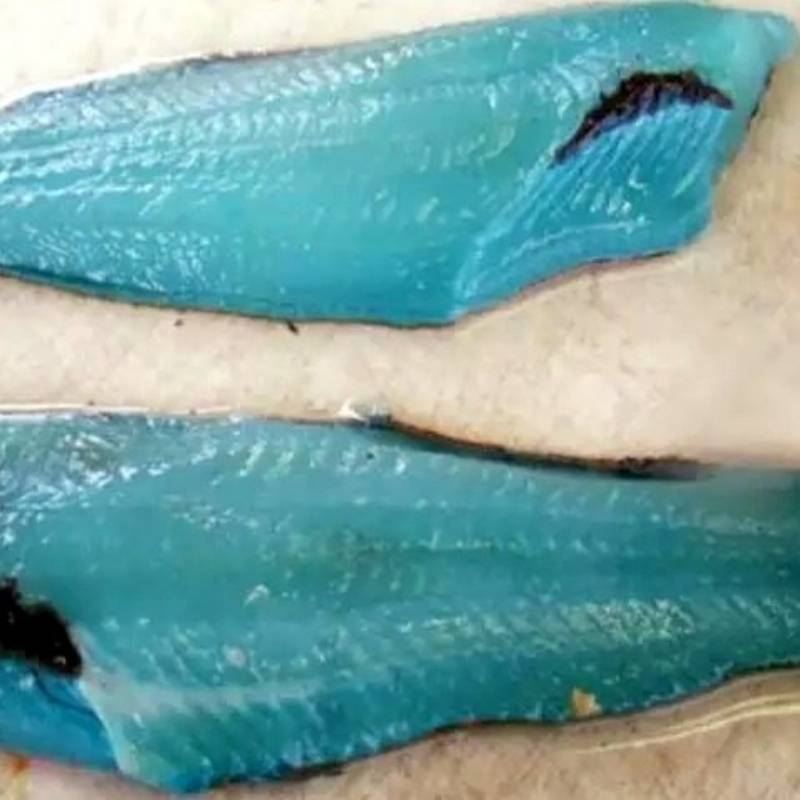
The blue lincod fish is a type of freshwater fish that is native to North America. The fish looks like a ling and cod fish, hence the name lincod.
Blue lincod fish is a good source of protein and omega-three fatty acids.
Blue lingcod is a bottom-dwelling fish found in the Pacific Ocean. The blue color is is due to biliverdin (a bile pigment).
When cooked, the blue color disappears. Some of its cousins, like the rock greenling and the kelp greenling, can be tinted turquoise.
11. Chesapeake Blue Crab
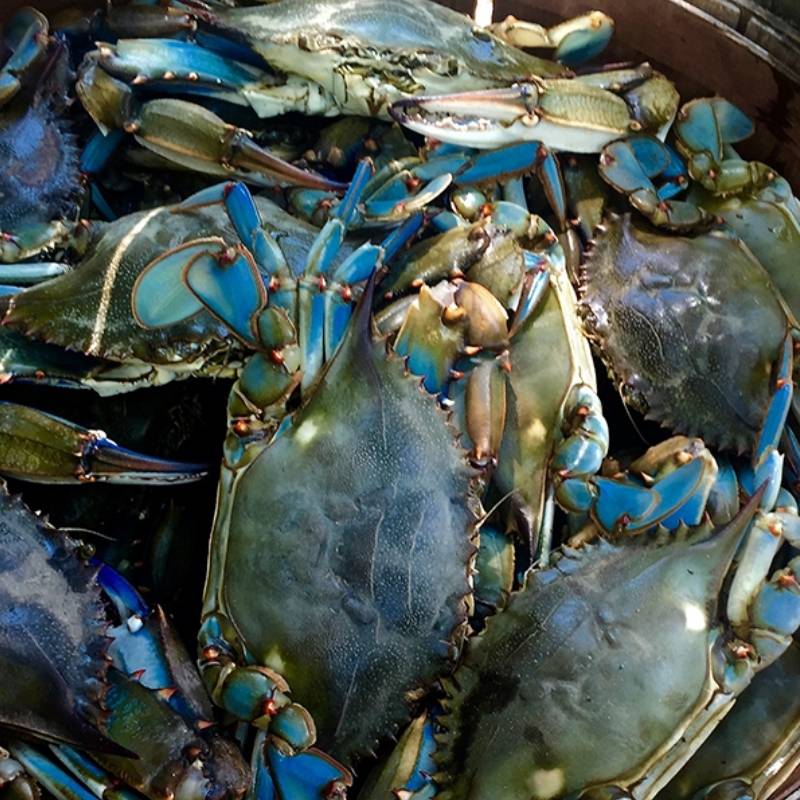
Blue crabs have white meat that has a mild, salty flavor with a subtle undertone of sweetness. Because of their delicate texture and buttery taste, some consider blue crabs to be superior to all other varieties.
The meat from the backfins offers the best taste, which is delicate, flaky, and tender.
Chesapeake blue crabs range from the U.S. Atlantic Coast to as far south as Argentina. Their shells measure up to 9 inches across.
12. Blue Fin Tuna
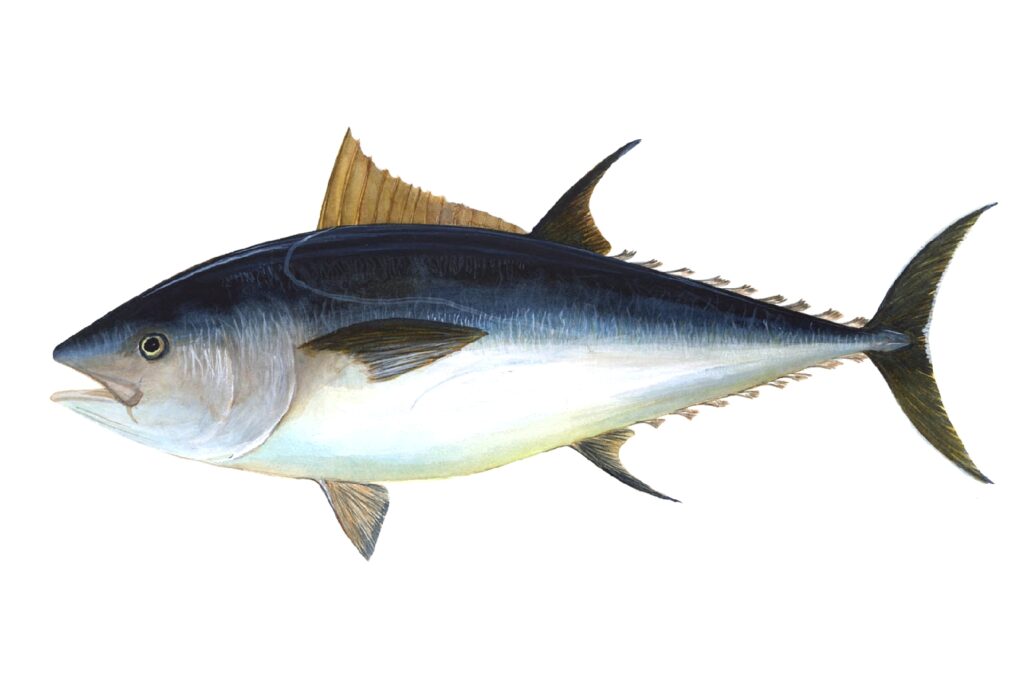
Blue fish have a higher fat content than white fish. Some other blue fish examples are salmon, sardines, mackerel, carp, herring, lamprey, anchovy, and angula.
Bluefish are best eaten as fresh as possible. Bluefin tunas are a species of tuna that are native to the Atlantic Ocean and Mediterranean Sea.
It is also known as the northern bluefin tuna, and the giant bluefin tuna.
13. Pacifico Mexican Blue Shrimp
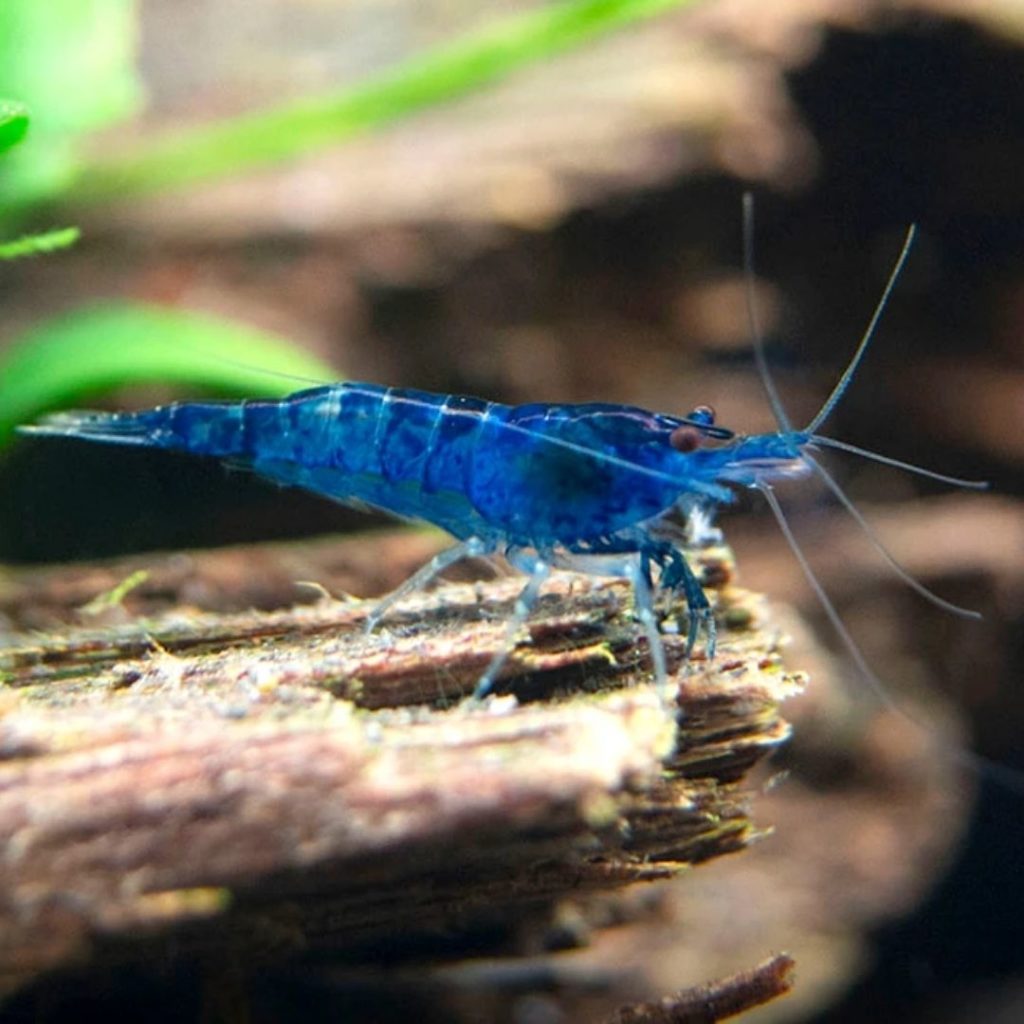
The salinity levels on Mexico’s Pacific coast make Mexican blue shrimp less salty. As a result, the meat of the Pacifico Mexican Blue Shrimp is sweet and delicate.
The difference is in the texture — wild-caught shrimp should have a crisp, snappy texture. Pacific Mexican blue shrimp is low in calories and high in protein.
It is regarded as one of the best shrimp species on the planet due to its deep shellfish umami and authentic shrimp flavor.
14. American Blue Crab
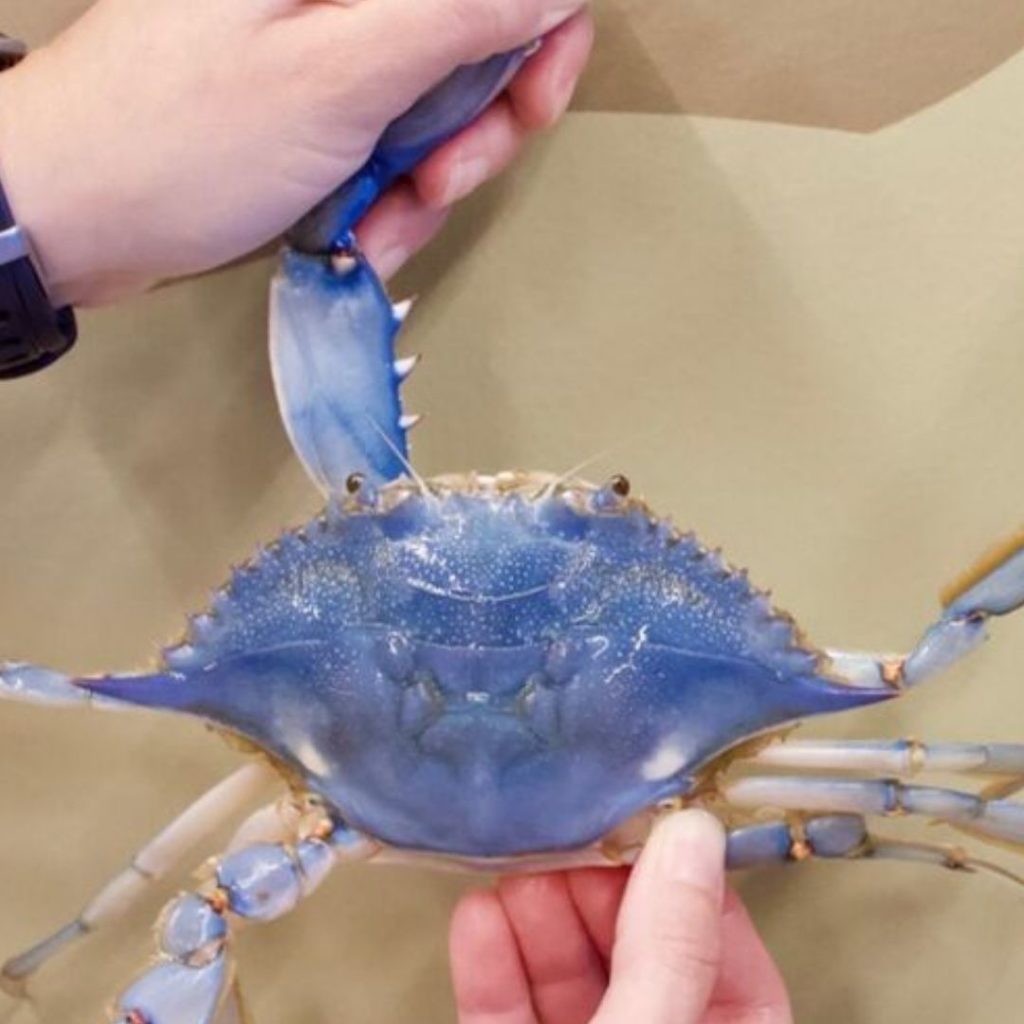
While in the South, blue crabs are prized for their delicate meat, they are not commonly consumed due crab’s yellowish “mustard.” This substance contains dangerous toxins. PCBs can leach into the pot when you cook crabs whole.
The meat of a blue crab is white, with a delicate sweet undertone and mild salty flavor. The backfin meat is tender and flaky.
Blue crabs are a one in a billion chance. The blue color is a rare genetic mutation.
The American blue crab, also known as the Atlantic blue crab or simply blue crab, is a species of crab that is found on the East Coast of the United States. The American blue crab is also found in the Gulf of Mexico and parts of Canada.
15. Blue Cheese
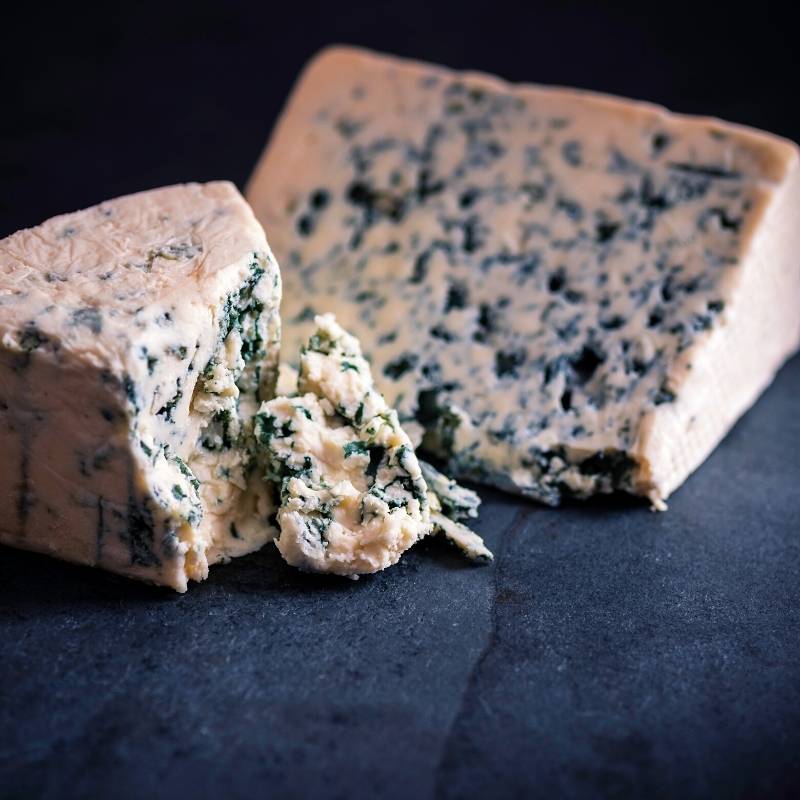
Blue cheese is a type of cheese that has blue or green veins running through it.
The blue or green veins are created by bacteria, and the cheese gets its flavor from the bacteria as well.
Blue cheese is high in fat and calories, so it should be eaten in moderation. However, its a good source of calcium and protein.
If you’re looking for a blue cheese to try, Roquefort is a popular choice.
16. Japanese Blue Milk Bread
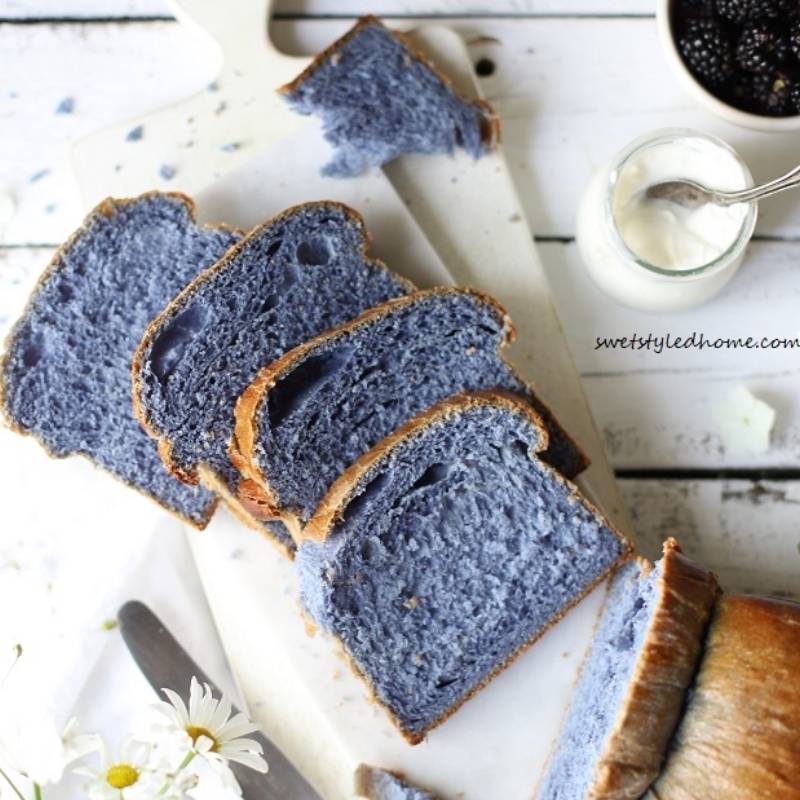
Japanese blue milk bread is a soft and fluffy bread made by adding loose butterfly pea flowers to the dough. Except for the crust, the whole bread is intensely blue. The flavor of the milk bread is not changed by the pea flowers.
In the twentieth century, milk bread was developed in Japan, it used tangzhong, a warm flour-and-water paste used in China to create soft, springy buns with tiny air bubbles. Milk bread with an unrivaled crumb and buttery flavor is a breeze to make at home with store-bought ingredients.
17. Utrecht Blue Wheat
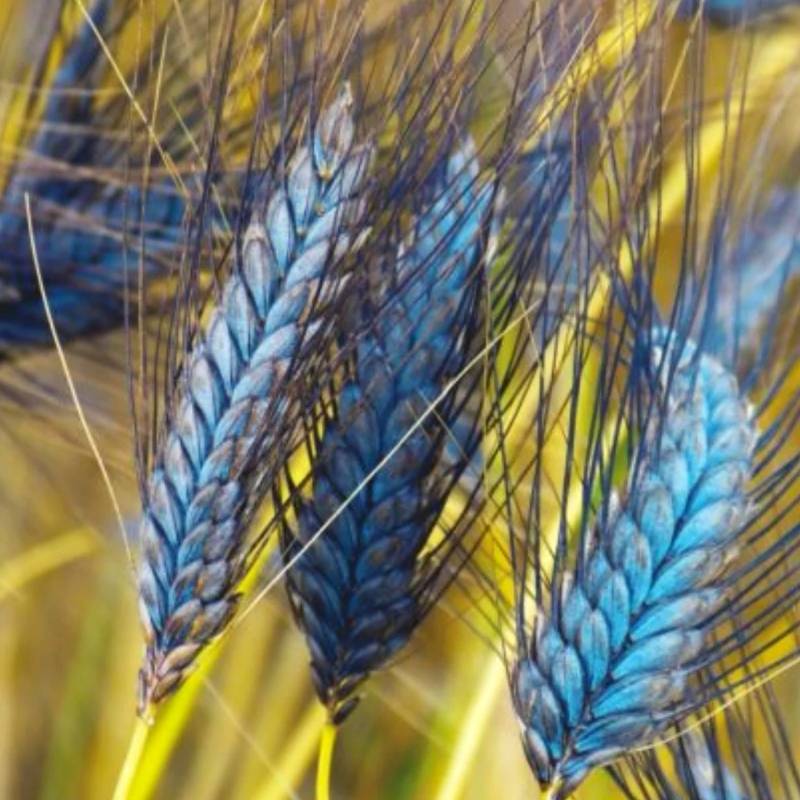
Utrecht blue wheat is edible wheat. However, it is typically used for ornamental or craft purposes, since it is difficult to thresh the wheatberries. Blue wheat is a Dutch heirloom that is grown in Utrecht, Netherlands.
18. Blue Pansy Flower
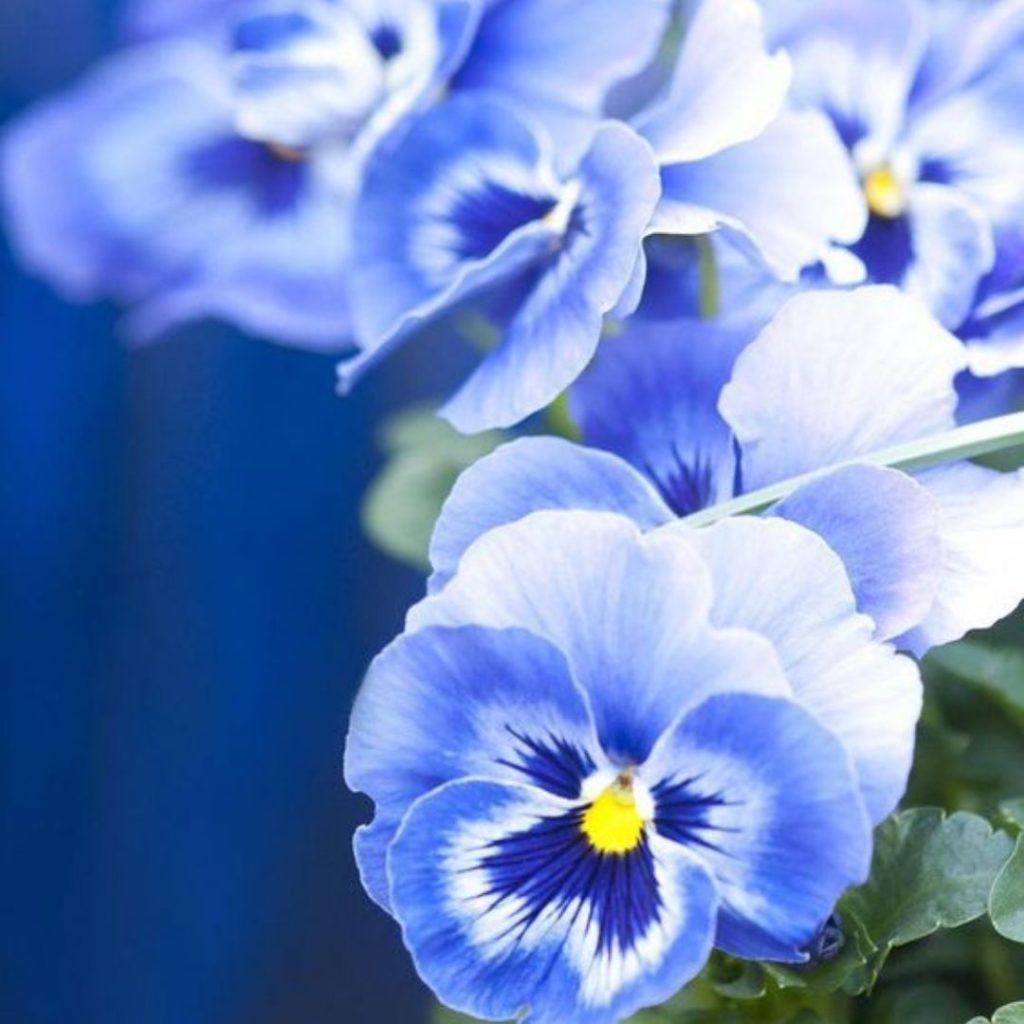
Blue pansies are completely edible, with a succulent, crisp, and tender texture and a light, perfumed scent. The vibrant flowers have a mildly sweet, mild, and tangy vegetal flavor with grassy, light mint, and wintergreen undertones.
Pansies are rich in antioxidants and also have anti-inflammatory benefits. They can be used as a garnish on salads or desserts. You can also use candied pansies to decorate cakes and other pastries.
19. Bachelor’s Buttons
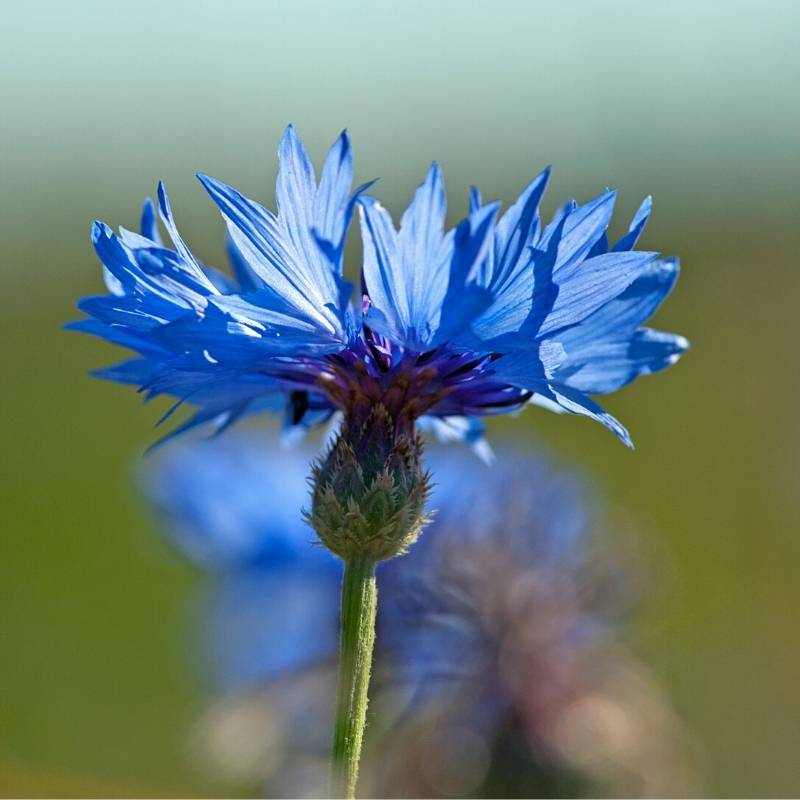
Bachelor’s buttons are another edible blue flower. Bachelor’s Button flowers have a pleasant aroma, and the petals are edible, with a subtly vegetal, peppery, and sweet flavor and hints of cucumber and clove.
The petals add blue color to salads, and can also be made into tea leaves. This edible blue flower is also known as cornflower.
20. Tuscan Blue Rosemary
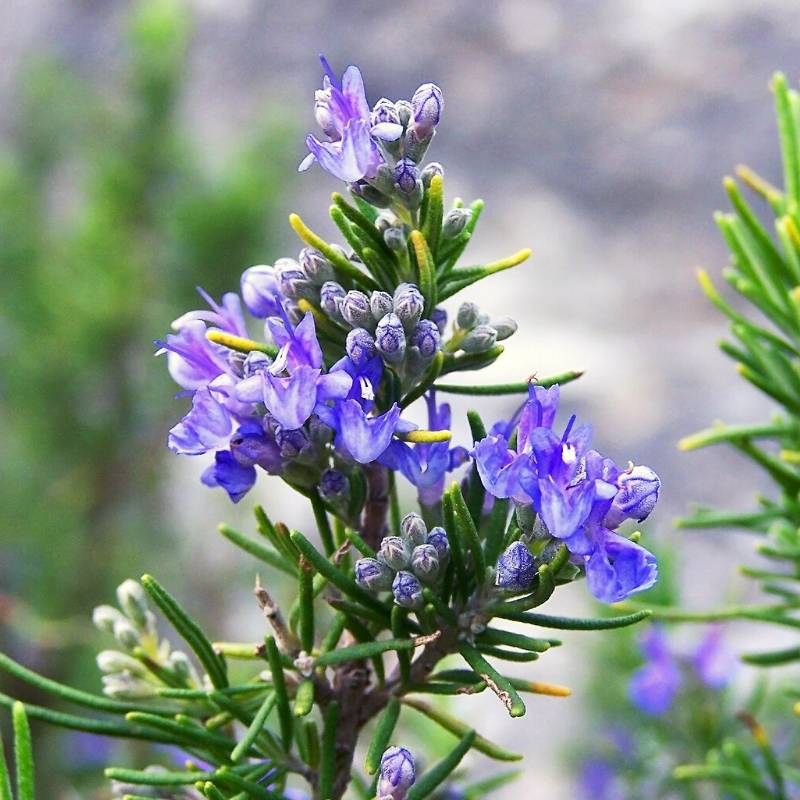
Tuscan Blue Rosemary is well suited for cooking in the same way as ‘regular’ rosemary.
It is a strong flavored herb, so use it sparingly.
The best way to use this herb is to strip the leaves from the stem and chop them finely before adding them to your dish.
21. Okinawan Sweet Potato
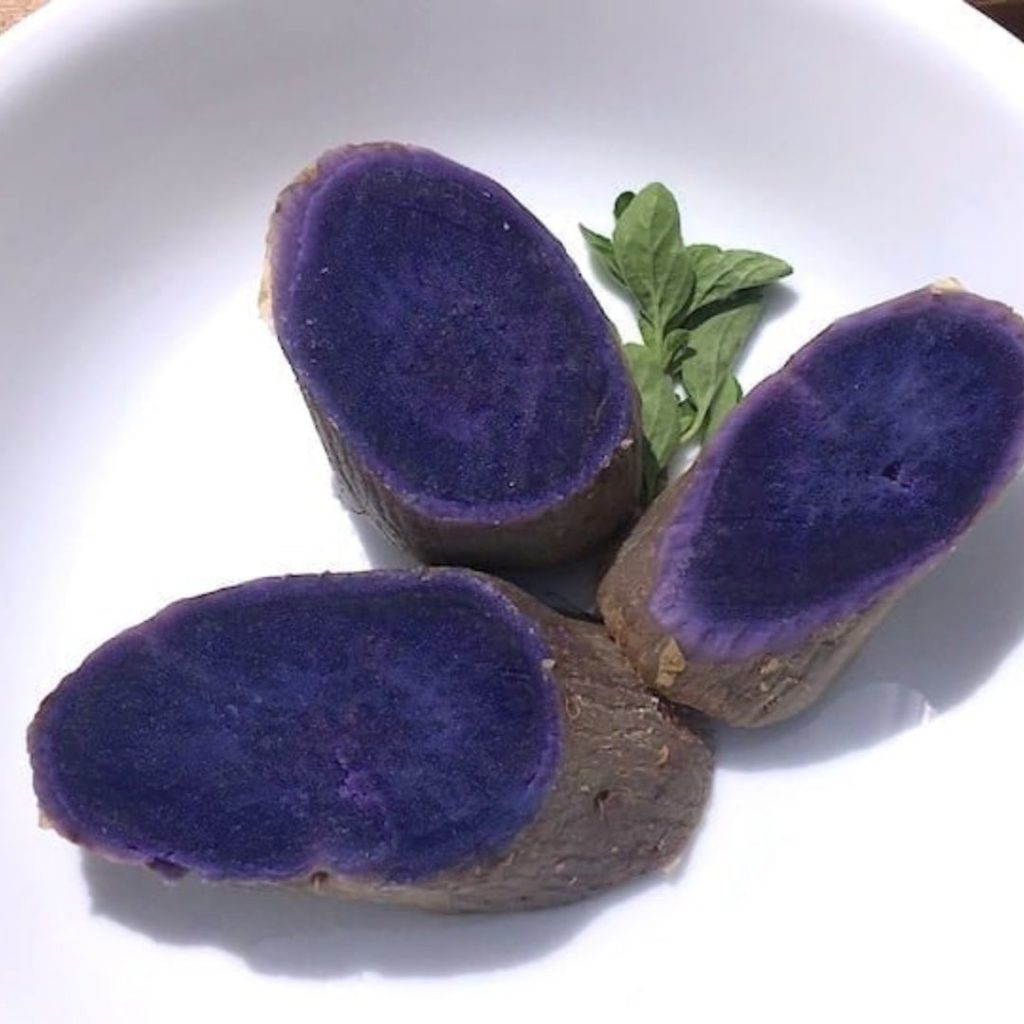
Okinawan sweet potatoes are also called Hawaiian sweet potatoes. They have a blueish-purple flesh. These potatoes are sweet and have a starchy texture.
The Okinawan sweet potato originated in the Americas and was introduced to Japan between 1492 and 1605. The plant thrived in Japan, where it instantly became popular in a range of different of Japanese dishes.
22. Damson Plums
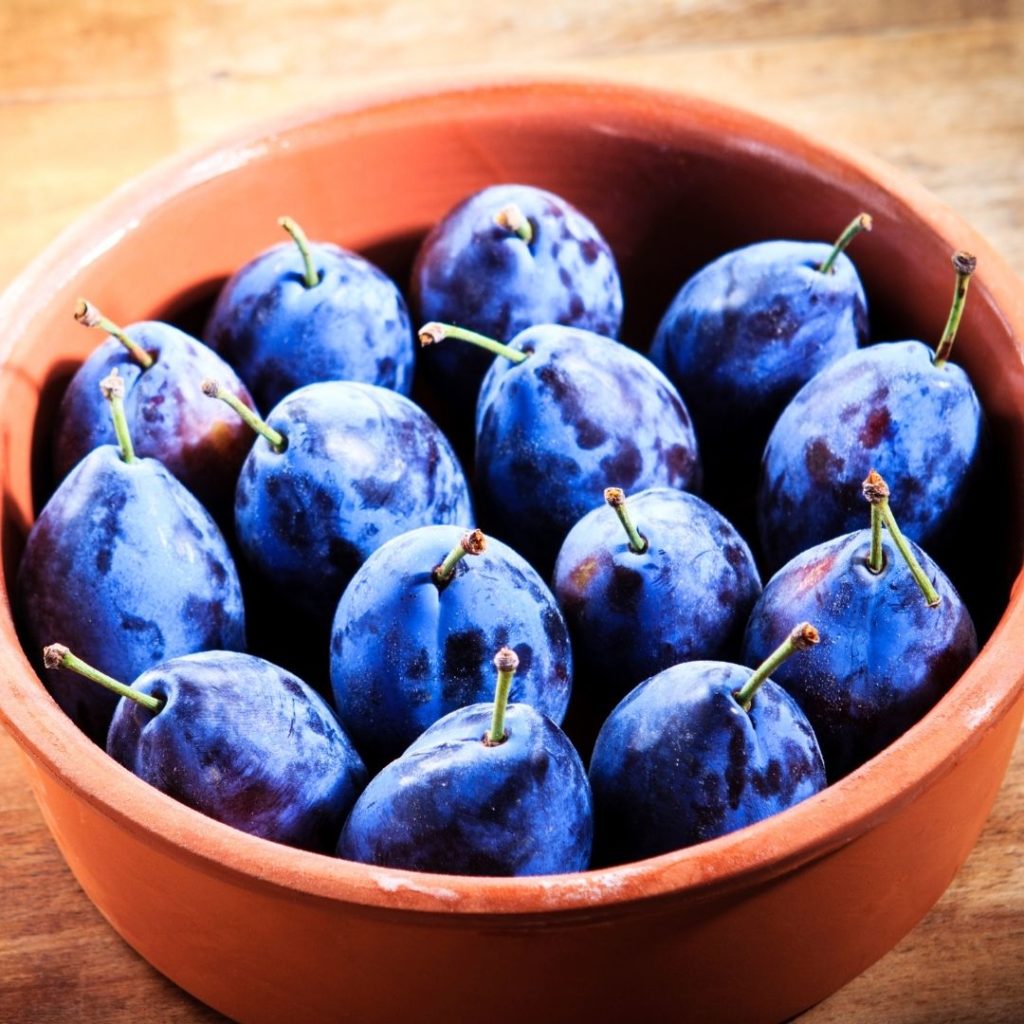
Damsons are blue plums that are often processed into jams and jellies. They can also be dried to make prunes.
The flavor of Damson Plum is determined by when it is harvested from the tree. If you pick one too soon, you may bite into a very sour plum, whereas a fully ripe plum has a sweet-tart taste that is a little bitter unless combined with other sweeteners.
Damson plums are high in fiber and contain vitamins A, C, and E.
23. Indigo Milk Cap Mushroom
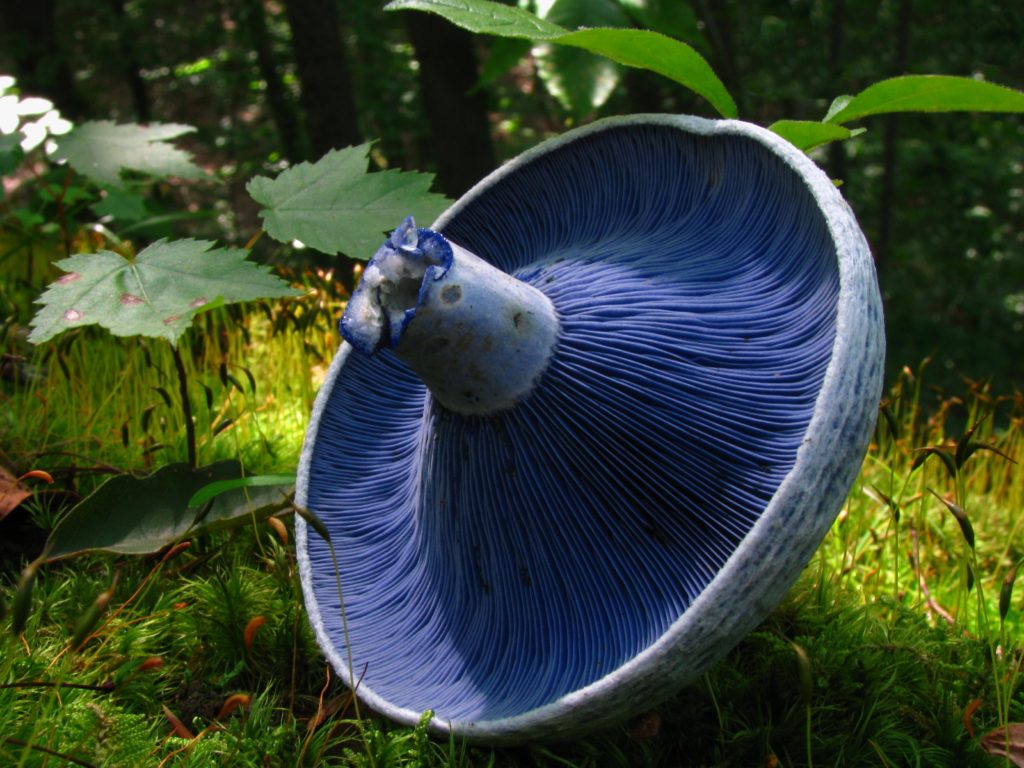
An edible mushroom, the indigo milk cap is native to North America and East Asia, and is sold in rural markets in China, Guatemala, and Mexico.
Once you cook them, however, they turn from blue to grayish in color! Blue mushroom are rare and beautiful, but not all of them are edible.
The indigo milk cap is one variety that you can cook like any other mushroom.
24. Blue Eggs
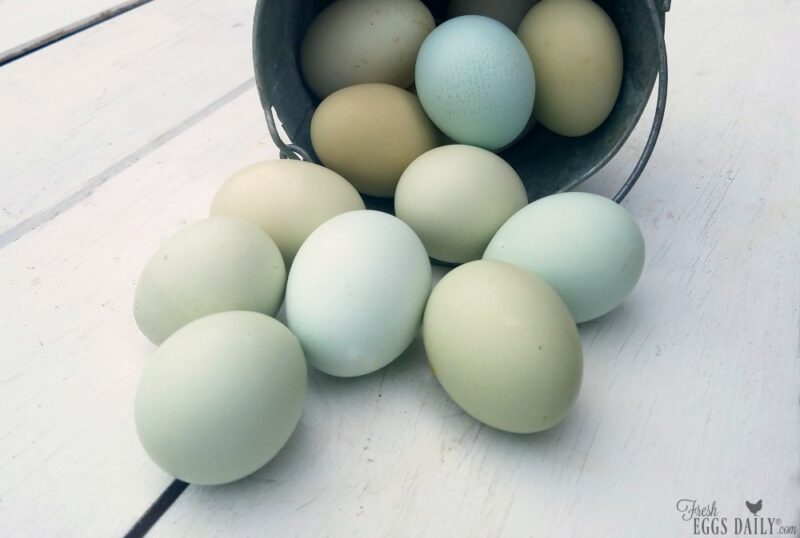
Eight different chicken breeds lay blue eggs: Easter Eggers, Cream Legbars, Lushi, Dongxiang, Araucana chickens, Arkansas Blue, Ameraucana chickens. and Whiting True Blue chickens.
The blue pigmentation is due to high levels of biliverdin in the shells, which is a by-product of bile breakdown.
Blue eggs have the same protein and nutritional value as any other chicken egg. The biliverdin in blue eggs is not necessarily harmful, blue eggs are widely eaten.
25. Concord Grapes
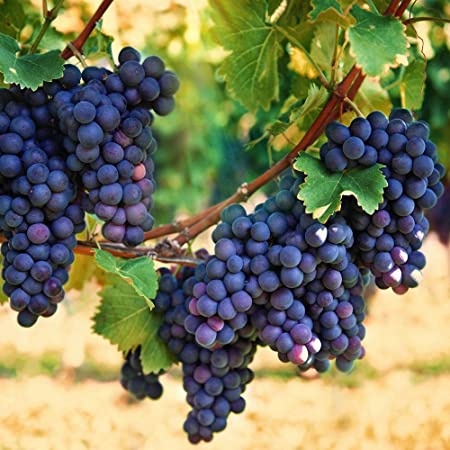
Concord grapes are a healthy, purple-blue fruit that can be eaten fresh or used to make wine, juices, and jams.
Health benefits of concord grapes include their ability to improve heart health, digestive function, and cognitive abilities.
Concord grapes have “slip skin” This means that the skin separates easily from the pulp. According to the Concord Grape Association, more of these distinctive purple grapes are grown in the United States than any other variety.
26. Blue Marble Tree Fruit
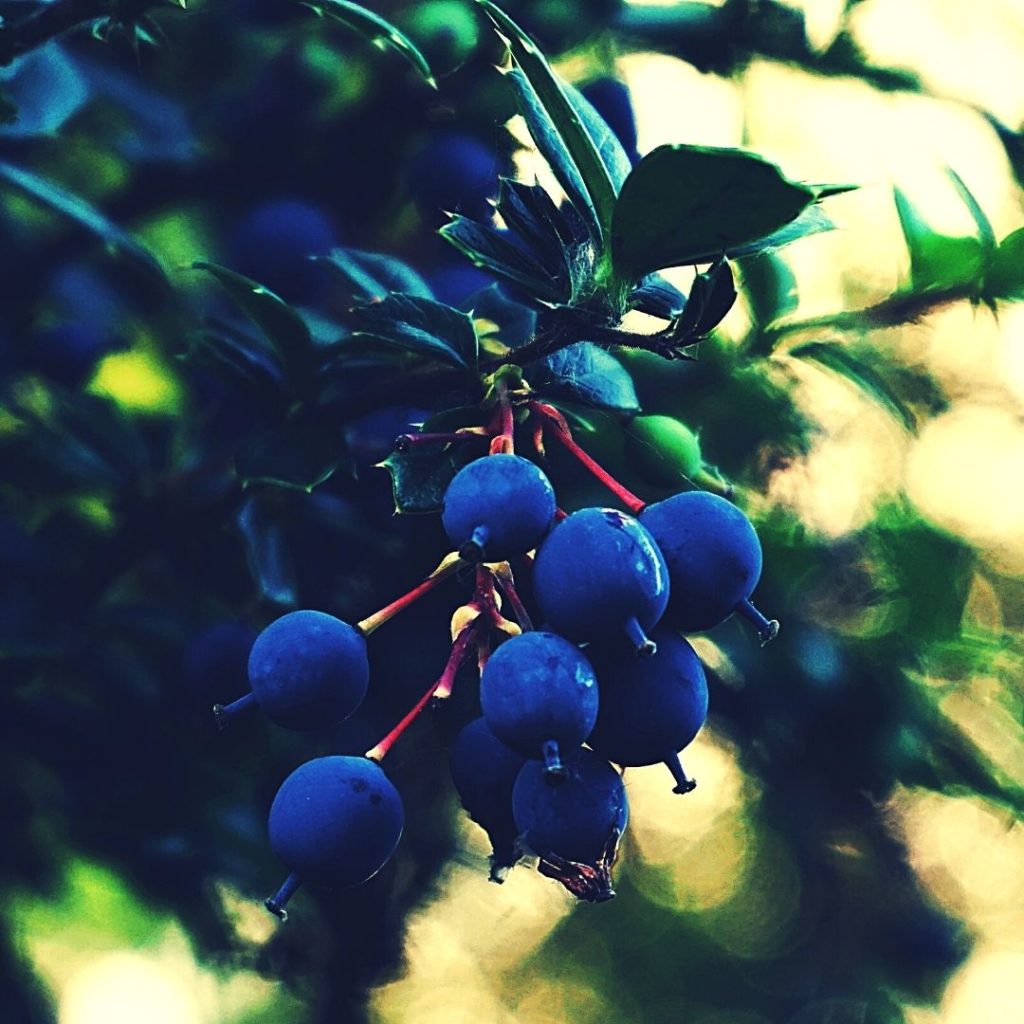
When ripe, blue marble tree fruit is iridescent blue. The seeds are used to make leis in Hawaii. Leis are garland like necklaces made of flowers, leaves, or in this case, seeds.
Blue marble is best when slightly overripe and soft, otherwise it can taste bitter. Blue Marble fruit has a somewhat sour and salty flavor.
The blue marble tree is also known as Quandong, New Guinea Quandong, Snowdrop Tree, Bead Tree of India, Blue Quandong, Indian Oil Fruit, and Blue Fig.
27. Starflowers
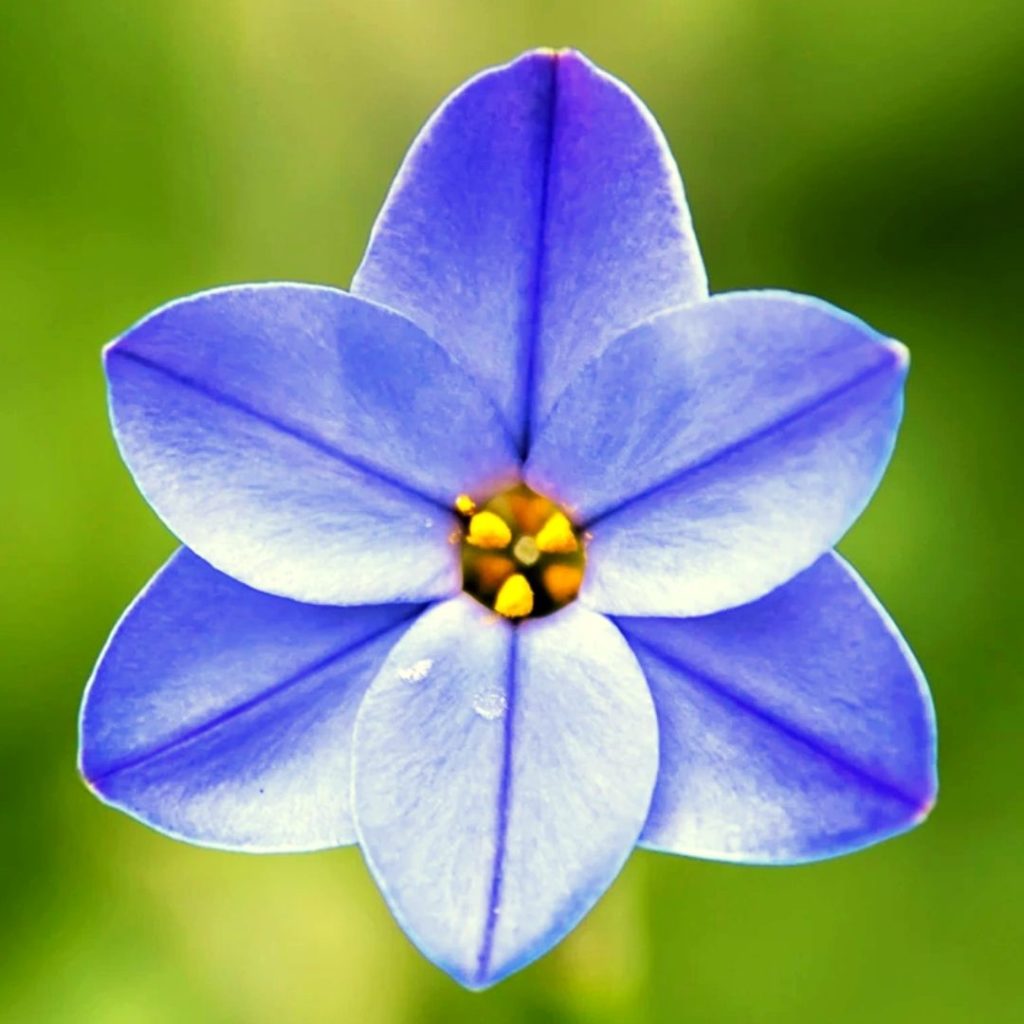
The edible leaves of starflowers are also known as “Garlic of the Incas”. Blue starflowers are star-shaped and brightly colored.
They look great on the plate and have a mild cucumber taste that some people describe as a sweet honey taste. They are also a little bit salty. These edible flowers are soft and have tiny hairs on them.
Borage seed oil is extracted from the seeds of this natural blue food and used in herbal medicine. This herb is native to Europe and grown in gardens for its edible leaves.
28. Adirondack Blue Potato
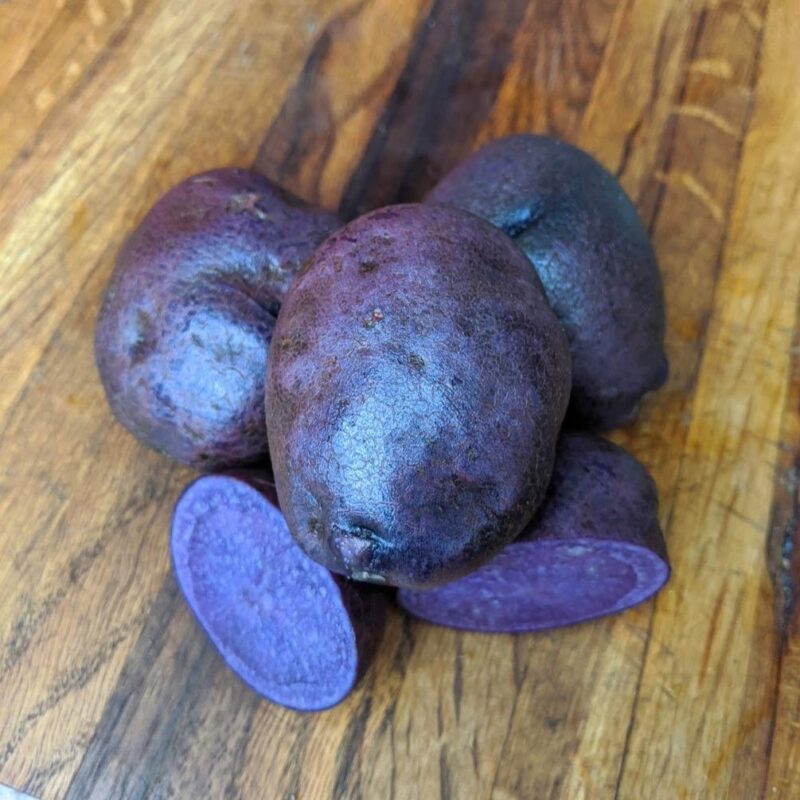
The adirondack blue potato variety has a bluish-purple flesh. You may cook them just like any other potato (fry, mash, bake, and boil). The taste of the Adirondack Blue is similar to that of the Yukon Gold potato.
Purple potatoes used to be rare, but now you can find them in most big supermarkets and farmers markets. Purple potatoes are available year round, but they are best in the fall.
Adirondack blue potatoes contain a substance known as anthocyanins. These potent antioxidants absorb renegade cells known as free radicals, lowering the risk of cardiovascular disease, stroke, and cancer. They are also high in fiber.
29. Persian Blue Sea Salt
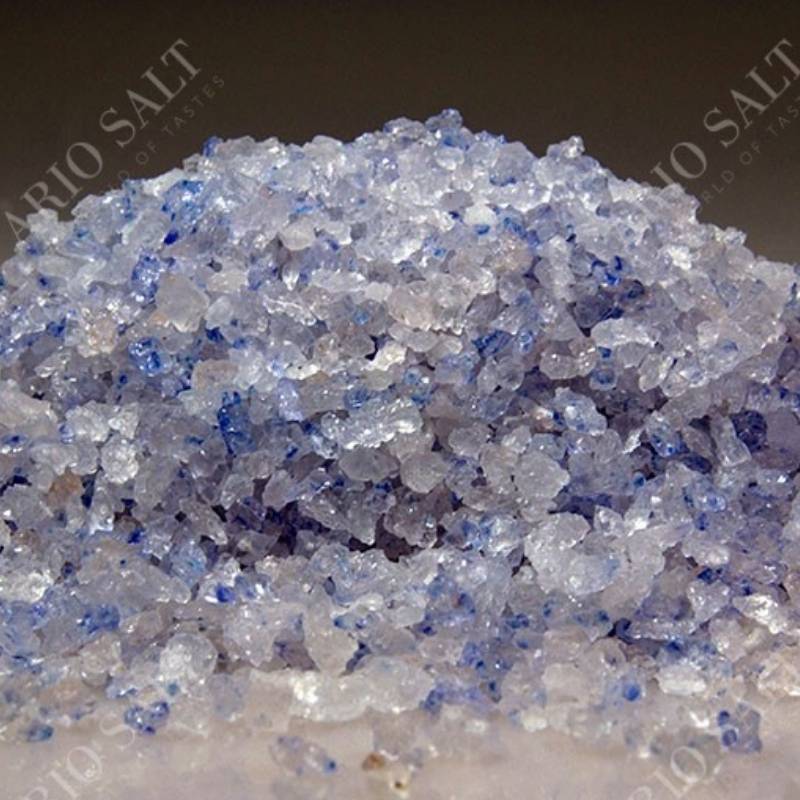
Persian blue sea salt is a rare salt harvested from salt ponds in Iran (Persia). The blue hue comes from a mineral known as sylvinite.
Among the rarest and most precious luxury salts, Persian Blue is found in an ancient salt lake bed in Iran. It has a strong initial saltiness, followed by a lingering aftertaste.
30. Blue Oyster Mushrooms
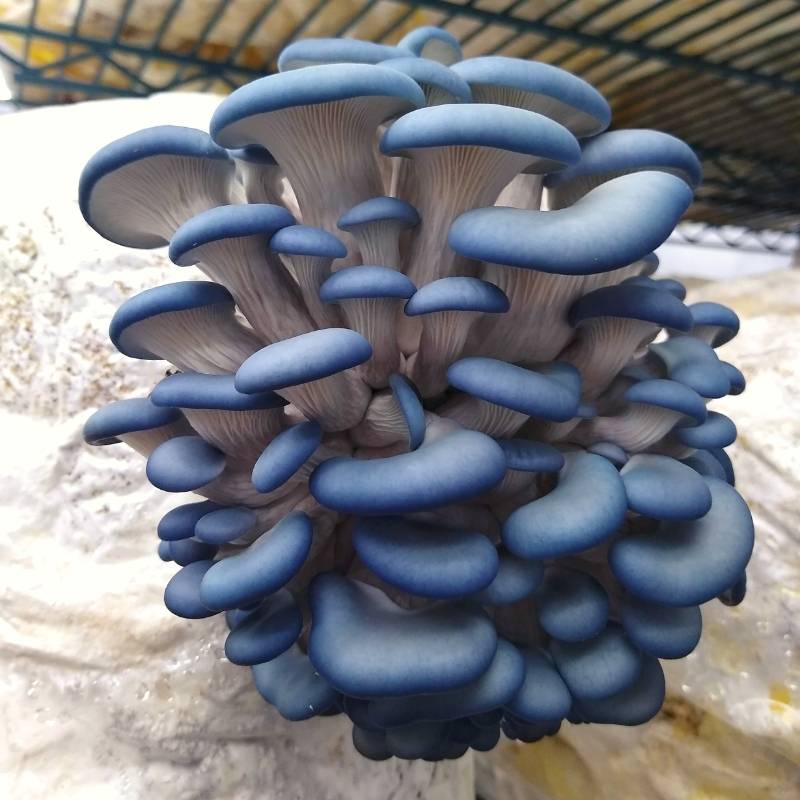
Oyster mushrooms are well-known throughout the world for their delicate texture and mild, savory flavor. The mushrooms have broad, thin, oyster- or fan-shaped caps that are white, gray, or tan in color and have gills lining the underside.
Blue Oyster mushrooms are easily grown at home. The initial blue color is breathtaking. The mushroom is also an excellent choice for outdoor cultivation, producing much larger fruits while requiring little care.
Antioxidants in blue oyster mushrooms help to protect against free radicals. This blue food also contain vitamin B-complex, vitamin C, and vitamin D.
Blue Food FAQs
What are blue foods?
Blue foods are any naturally occurring food items that are blue in color. This can include fruits, vegetables, grains, and even some types of meat. The color blue is not commonly seen in many types of food, so these items can be quite unique and visually striking.
Are blue foods safe to eat?
Yes, blue foods are completely safe to eat. The blue color in these foods is often the result of natural pigments or plant compounds. Some common examples of blue foods include blueberries, blue, and blue corn.
What are some popular blue foods?
Some popular blue foods include blueberries, blue corn, and blue spirulina.
Are there any health benefits to eating blue foods?
Many blue foods are rich in antioxidants and other nutrients that can be beneficial for your health. For example, blueberries are high in fiber and vitamin C, and have been shown to have potential anti-inflammatory effects.
Can blue foods be cooked or are they only eaten raw?
Blue foods can be cooked and eaten in a variety of ways. For example, blueberries can be baked into pies or muffins, or added to smoothies or oatmeal. Blue corn can be ground into flour and used in cornbread or tortillas.
Are there any blue foods that are not naturally occurring?
Yes, there are some blue foods that are not naturally occurring. These foods may be dyed blue using food coloring or other artificial coloring agents. It’s important to be aware of this, especially if you are trying to avoid artificial ingredients in your diet. Always check the ingredient list on packaged foods to see if they contain any artificial coloring.
Why are there so few blue foods?
Blue anthocyanins are not chemically stable. In order for the blue color to become dominant, the chemical makeup must change slightly. This is very rare.
Are blueberries actually blue?
Blueberries are not actually blue, but a deep purple. This color is because of a pigment called anthocyanin. Anthocyanin is especially rich in blueberries.

